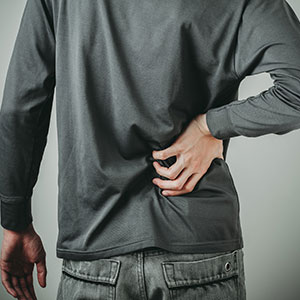
Reflex Sympathetic Dystrophy Syndrome (RSDS), also referred to as Complex Regional Pain Syndrome (CRPS), is a disorder characterized by chronic pain that begins after an injury, stroke, or heart attack. Typically, the pain associated with RSD is worse than the pain from the precipitating injury and may evolve into an RSD disability. Doctors don’t know the exact cause of the syndrome, but there are effective treatments available.
RSD involves the body’s sympathetic nervous system, which controls our fight or flight responses. Doctors think the cause of the pain comes from mixed signals sent by the nervous system. In essence, the sympathetic system responds or turns on after an injury but doesn’t turn off the way it should. It is possible to get RSD without incurring an injury but these cases are very rare.
The symptoms of RSD may develop slowly beginning as pain that grows worse over time. You may not recognize the abnormality of the pain initially. Common triggers for the disorder include:
The most common places for the pain to develop are the arm, shoulder, leg, or the hip. The pain can spread beyond the site of the injury to other parts of the body. RSD can affect your immune system and cause redness, swelling, and warming of the skin around the injury.
Pain associated with RSD is typically constant and severe. People with RSD have described the pain as aching, burning, cold, deep, and throbbing. Skin sensitivity from normal activities is another symptom of the syndrome. You might experience some of the following symptoms as well:
It may take time for your doctor to determine that your pain is due to RSD. Pain that doesn’t go away after an injury or becomes more severe is a clue that it could be due to RSD.
The diagnosis of RSD relies on a series of exams and tests. Your doctor may begin with a physical exam and your medical history. Medical tests that can identify signs of the condition include a bone scan, an MRI, a sweat test, and x-rays.
Early detection increases the effectiveness of any treatment option. One of the most important treatments is a regular program of physical activity to increase mobility and exercise the affected areas. There’s no cure for RSD and some cases don’t respond to treatment. However, there are prescription and non-prescription drug options your doctor might recommend:
Other treatment options include the application of small electric shocks to relieve pain, physical therapy, psychotherapy for relaxation, and splints to help with pain in the hands.
Since the symptoms of RSD vary from patient-to-patient and can appear and disappear, insurance companies rely on a collective body of evidence to determine whether or not your RSD qualifies for long-term disability benefits. It is important to document not only your symptoms of RSD but the evidence that supports your diagnosis and demonstrates its effects on daily living.
Again, it is critical to explain how the symptoms of RSD prevent you from performing your job duties or the duties associated with any job.
Speak to CJ Henry Law Firm PLLC today about your claim. An experienced Ocala FL long-term disability lawyer can help you improve your chances of winning an approval.
